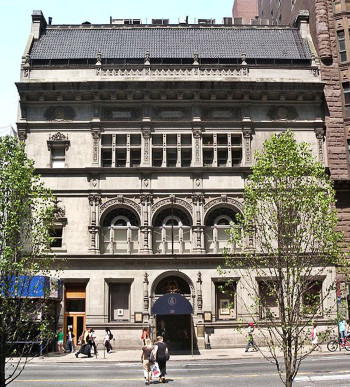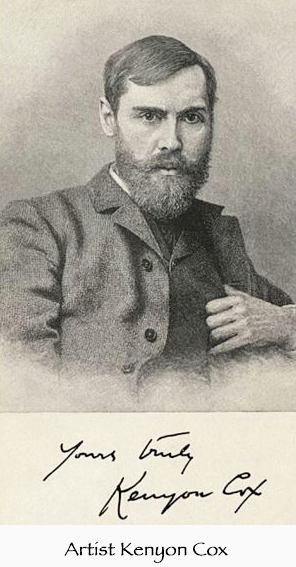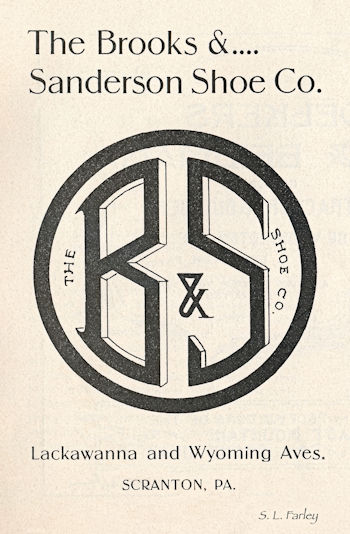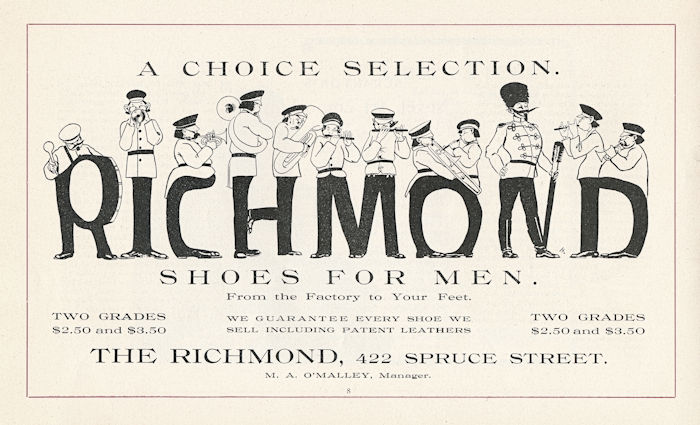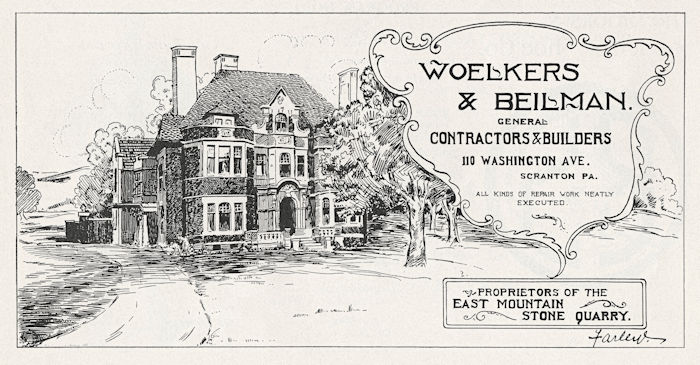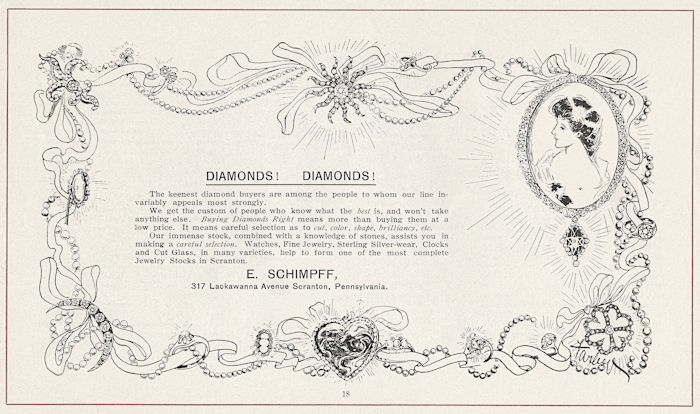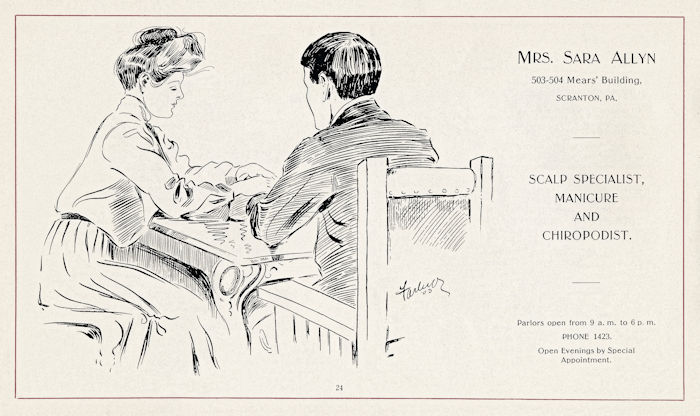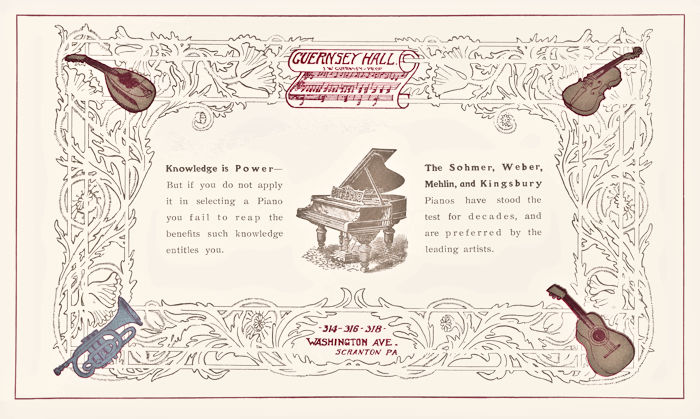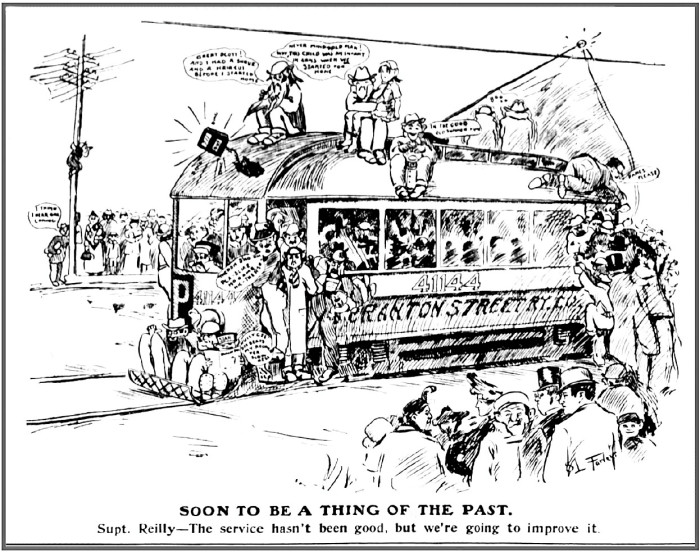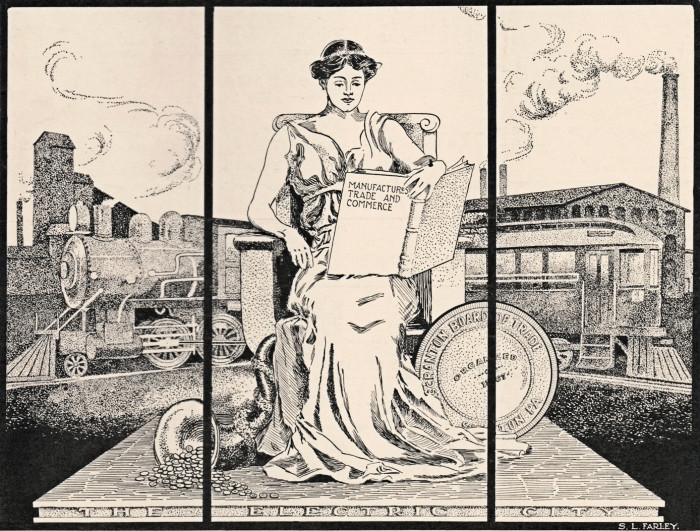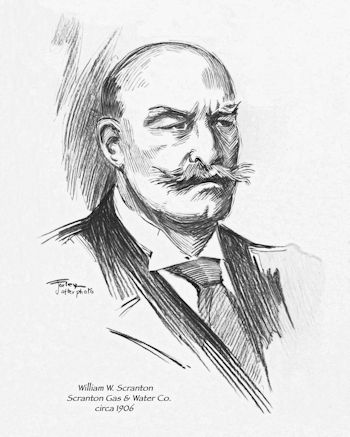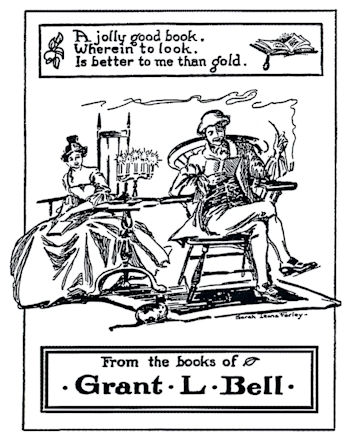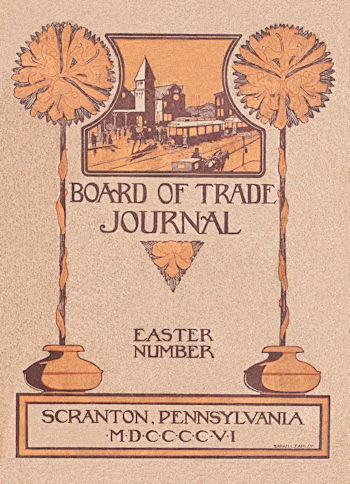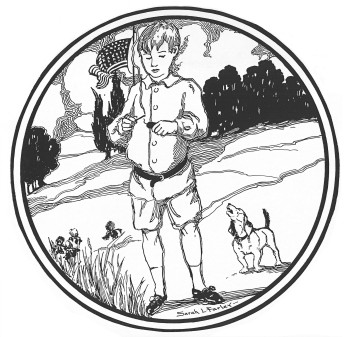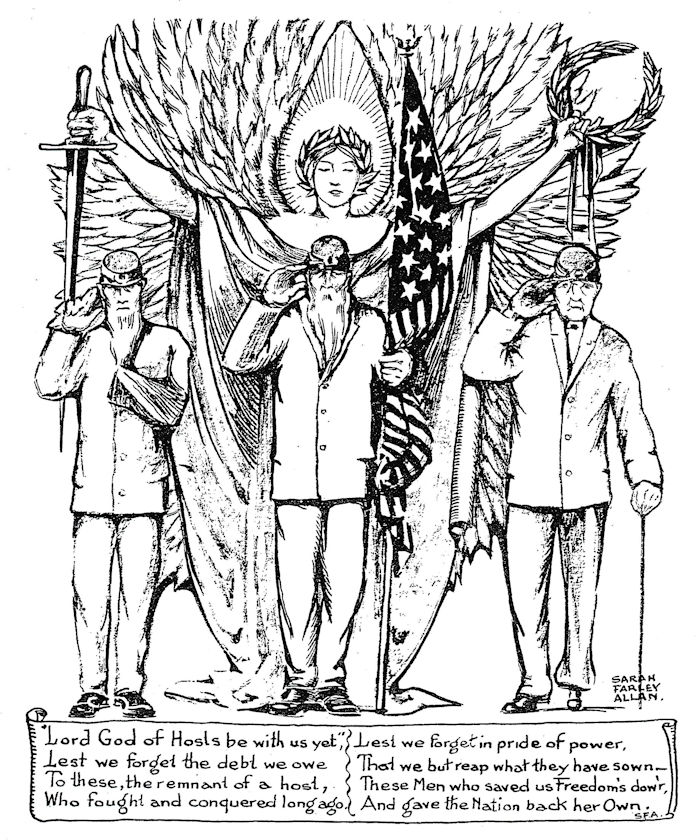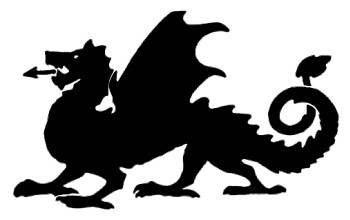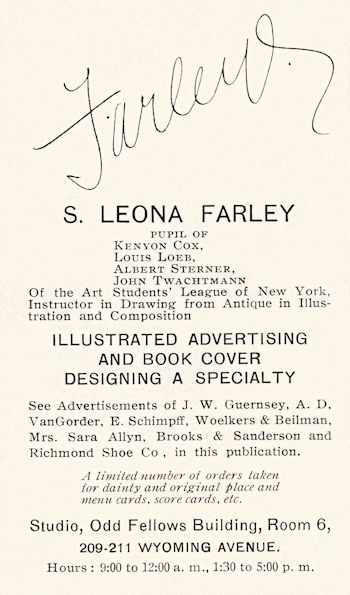 |
On April 29, 1903, sixty orchestra members from the
Metropolitan Grand Opera House in New York City performed at Scranton’s
Watres Armory. Scranton artists, Sarah Leona Farley and P.
W. Costello, were hired to illustrate the cover and business
ads that were included in the 34-page program.
Left:
Art Services Ad, Sarah Leona Farley, 1903
When Sarah Farley set up her art studio in downtown
Scranton in 1902, she was 24 years old and a recent graduate
of the Art Students League in New York City. In this ad for
her own business, she highlighted the name of her art school, four of
her art teachers, all nationally renowned, and the art services that
she offered, including, illustrated advertising and book cover
designing. For the opera patron, she identified
seven other business ads that she illustrated in the program.
She added her studio address and signed her last name at the
top. To demonstrate her illustration skills, she
“bookended” the ad with a portrait of a horse and a self-portrait of
her playing the violin.The drawings are described below.
Right: Art Services
Ad - Playing Violin (Self-Portrait), Sarah Leona Farley, 1903
Farley played the violin from an early age into
adulthood. She performed in concerts in Scranton and, later, at her
Congregational Church in West Lebanon, NH.
This pencil, charcoal and watercolor drawing is a rare
self-portrait of the artist.
|
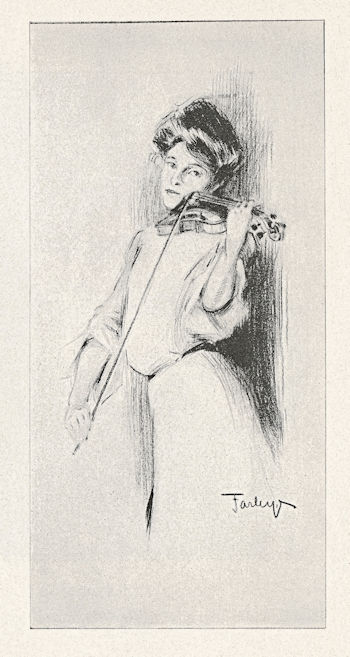 |
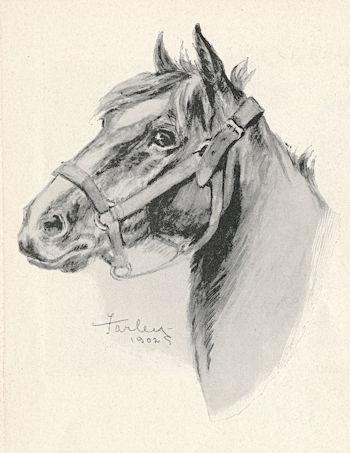 |
Left:
Art Services Ad - Horse Portrait, Sarah Leona Farley, 1903
Horses were one of Sarah Farley’s favorite art
subjects, going back to her high school years in Warwick, NY.
In Oct. 1900, when Sarah was an art student in New York City,
she ran an ad in the Warwick Valley Dispatch for “black & white
drawings from life” in varying sizes for “horsemen and lovers of
horses.”
This horse portrait, drawn two years later, is similar
in style and color. It was drawn with pencil and charcoal. She added
light gray watercolor to the horse’s mane, its reins and to the
background.
Right: Cherub and
foliage, from A. D. Van Gorder Ad, Sarah Leona Farley,
1903
Entitled, “Captivated,” Farley’s illustration of a
winged cherub, who is holding a bow and arrow and admiring a
photograph, is the centerpiece of an ad for a frame shop that also
processed photos. She added flowers, leaves and stems at
bottom.
|
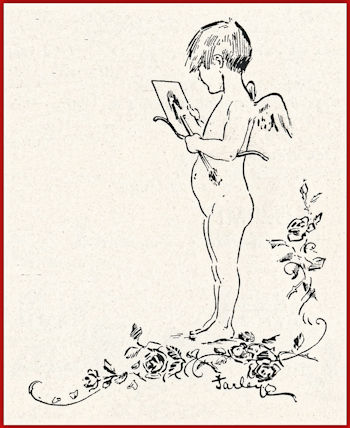 |
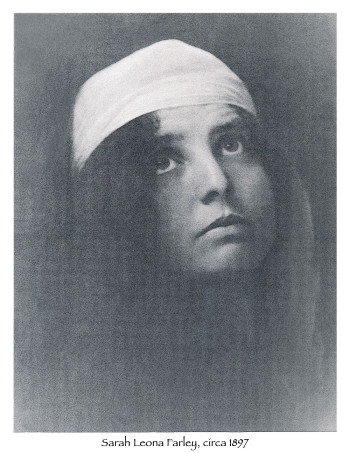
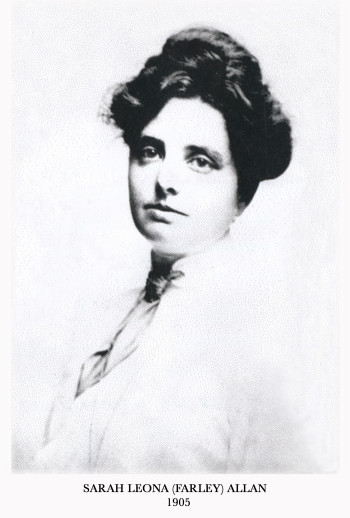
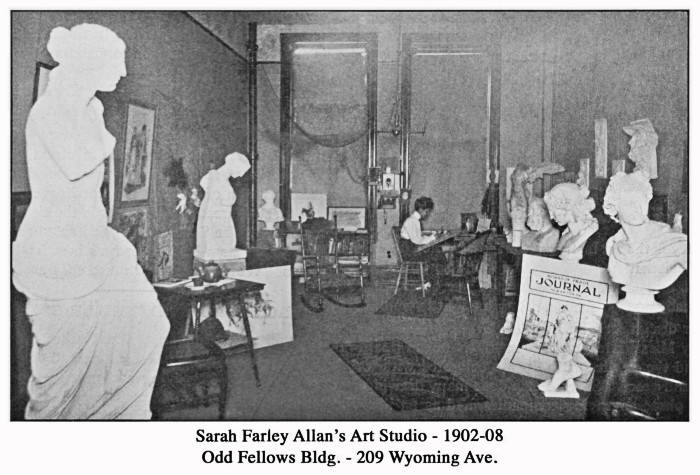
 Lackawanna
County, Pennsylvania, USGenWeb
Lackawanna
County, Pennsylvania, USGenWeb
